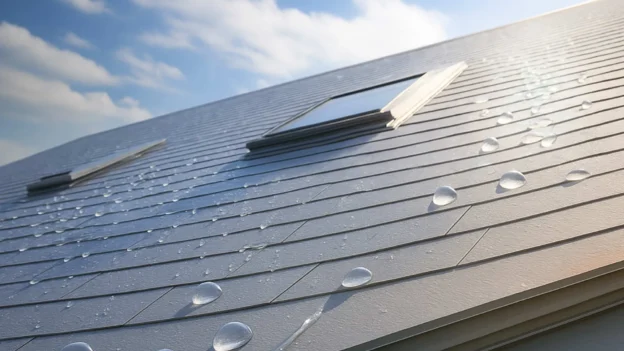A team of researchers at the University of Sydney, in collaboration with Dewpoint Innovations, has developed a nanostructured polymer coating that acts as a cooling paint and atmospheric water harvesting system, without the need for an electrical power source.
Smart coatings and cooling paint
The new coating was manufactured from polyvinylidene-co-hexafluoropropene fluoride(PVDF-HFP), which reflects up to 97% of sunlight due to its internal porous structure. This characteristic makes it possible to keep the surface up to six degrees cooler than the surrounding air, generating ideal conditions for moisture condensation in the form of droplets on the surface of the material.
During outdoor tests conducted on the rooftop of the Sydney Nanoscience Centre, the coating was able to collect dew for more than 30% of the year, even in low humidity conditions. In optimal scenarios, up to 390 milliliters per square meter per day were collected, making this technology a viable option to supplement other sources of drinking water.
This coating can be applied like a conventional paint by roller or sprayer, and has been designed to resist degradation under intense sun exposure. For example, some white paints do not use UV pigments such as titanium dioxide, improving durability and avoiding adverse effects such as glare, a quality that is built into the company’s product.
The use of such coatings could reduce dependence on air conditioning and mitigate the heat island effect in urban environments. It also opens up possibilities for supplying water through roofs in homes, remote infrastructure or agricultural facilities, even in arid areas where nighttime humidity allows dew to form.
With more than two million Australian homes collecting rainwater, the integration of this coating represents a strategic improvement. In addition, its application could be extended to uses such as precision horticulture, misting refrigeration and hydrogen generationwhere a constant and decentralized water source is required.
Source and photo: The University of Sydney

